MAGNEZIX® CS
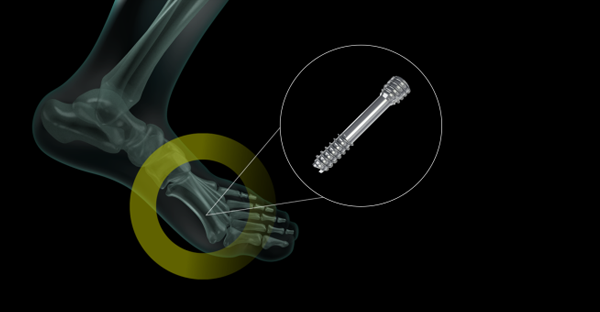
MAGNEZIX® CS implants are metallically stable, and similar to systems made of steel or titanium, and are several times stronger than conventional polymer implants. However, unlike metal screws and wires, they do not need to be removed - because they are resorbed, promote healing, and are completely replaced by the body's own tissue. These properties bring very clear advantages for doctors and patients.
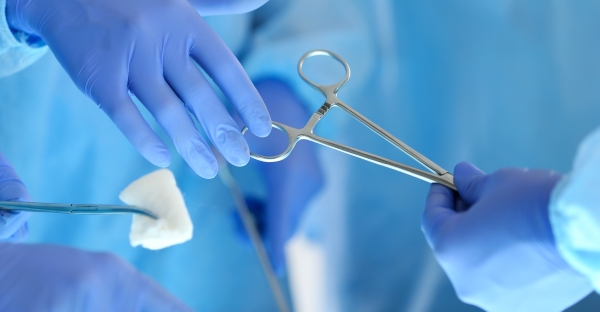
Bioabsorbable magnesium alloy
The use of MAGNEZIX® implants makes any subsequent implant removal unnecessary, and moreover, it supports the osseous healing process. MAGNEZIX® is bioabsorbable and biocompatible.
Self-tapping screw tip
The self-tapping properties of the screw tip reduce the operation time and simplify the surgical application technique.
Cannulated screw (CS 2.7, CS 3.2; CSc 4.8)
The screw is cannulated (hollow) to allow controlled positioning of the screw using the guide wire. This feature supports minimal invasive surgery.
Self-tapping head thread
The self-tapping design of the screw head simplifies insertion and countersinking of the screw head.
Different thread pitches
The threads of the head and the shaft have different thread pitches. This adapted design of the screw generates compressive forces and supports the intended inter-fragmentary compression.
Surface design MAGNEZIX® CSc
The top layer of MAGNEZIX® CSc implants is converted into a dense, porous and strongly adherent magnesium-based oxide film. This surface finish acts as a protective layer and is fully bioabsorbable. A significant delay in the degradation process is achieved to maintain the desired integrity of the implant for a longer period where necessary and thus to facilitate an extended range of indications.
Various sizes
These implants are available in many different combinations of different diameters and different lengths.
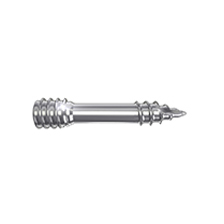
MAGNEZIX® CS 2.0
+The implant with the smallest diameter. The MAGNEZIX® CS 2.0 can be used as a bone screw for the fixation of small bones and bone fragments thanks to its small dimensions, for instance, for intra-articular and extra-articular fractures, arthrodeses, osteotomies, and pseudoarthroses, as well as for bony torn ligaments and tendons.
Diameter
2 mm
Head diameter
2.5 mm
Lengths
08 mm | 10 mm | 12 mm |
14 mm | 16 mm | 18 mm |
20 mm | 22 mm | 24 mm
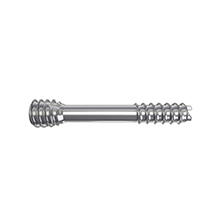
MAGNEZIX® CS 2.7
+The indications for the hollow MAGNEZIX® CS 2.7 are reconstructive procedures on children, young people and adults after fractures, malpositions and/or other pathological bone alterations of the skeleton: fixation of fractures (broken bones), correcting malpositions, correcting faulty joint development, or joint stiffening.
Diameter
2.7 mm
Head diameter
3.6 mm
Guide wire
1.0 mm
Lengths
10 mm | 12 mm | 14 mm |
16 mm | 18 mm | 20 mm |
22 mm | 24 mm | 26 mm |
28 mm | 30 mm | 32 mm |
34 mm
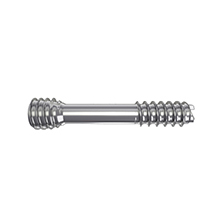
MAGNEZIX® CS 3.2
+The MAGNEZIX® CS 3.2 can be used in children, young people and adults as a temporary load-bearing device for bone fixation. Areas of application are: fractures (intra-articular and extra-articular), arthrodeses, osteotomies and pseudoarthroses, bony torn ligaments and tendons, Processus styloideus radii et ulnae, Capitulum and Caput radii, Hallux valgus corrections.
Diameter
3.2 mm
Head diameter
4.0 mm
Guide wire
1.2 mm
Lengths
10 mm | 12 mm | 14 mm |
16 mm | 18 mm | 20 mm |
22 mm | 24 mm | 26 mm |
28 mm | 30 mm | 32 mm |
34 mm | 36 mm | 38 mm |
40 mm
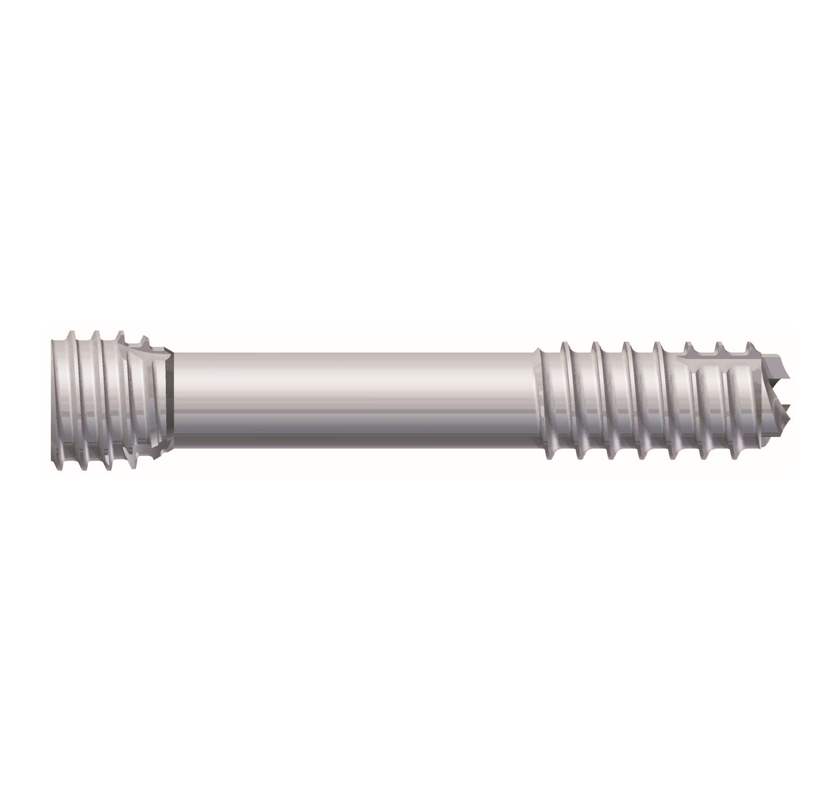
MAGNEZIX® CSc 4.8
+
The largest MAGNEZIX® implant. The MAGNEZIX® CSc 4.8 is used for reconstruction procedures after fractures and malalignments in the human skeleton. The CSc 4.8 can be used for the following areas of application: fractures (intra-, extra-articular), arthrodeses, osteotomies and pseudarthroses; among others proximal humerus, distal femur, proximal and distal tibia, calcaneus, talus and metatarsus.
Diameter
4.8 mm
Head diameter
5.7 mm
Guide wire
1.7 mm
Lengths
14 mm | 16 mm | 18 mm |
20 mm | 22 mm | 24 mm |
26 mm | 28 mm | 30 mm |
32 mm | 34 mm | 36 mm |
38 mm | 40 mm | 42 mm |
44 mm | 46 mm | 48 mm |
50 mm | 55 mm | 60 mm |
65 mm | 70 mm
MAGNEZIX® Pins
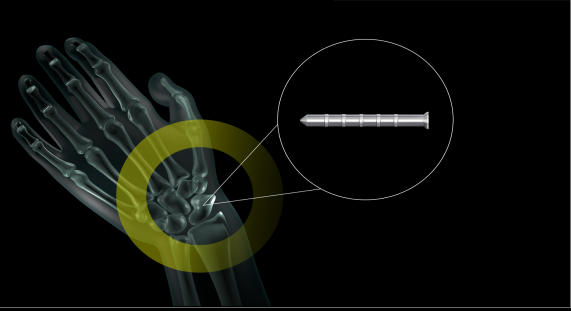
MAGNEZIX® Pins have levels of mechanical stability which far exceed the values of previous bioabsorbable materials (5 x higher compared to PLA/PGA implants). This outstanding stability is a new benchmark for numerous applications in trauma and sports surgery.

Unique, transformable magnesium alloy
The use of MAGNEZIX® implants makes any subsequent implant removal unnecessary, and moreover, it supports the osseous healing process. MAGNEZIX® is bioabsorbable and biocompatible.
Head design
The flat designed head of the MAGNEZIX® Pin enables stable reduction of the bone fragment. Prominent protrusion of the implant involving possible damage to proximal structures can thus be avoided, and the pin head can be completely countersunk.
In addition, a recess in the pin head improves positioning of the impactor, and the impactor is prevented from slipping off the pin head during impaction.
Axial stabilising shaft design
The symmetric collars on the pin shank result in compression of the free bone fragment during impaction of the implant. In addition, the collars increase the axial positioning precision of the implant and thus ensure reduction during the healing process.
Design of the pin tip
The tip design of the MAGNEZIX® Pin displaces cancellous bone and thus compresses the implant bed. The pin tip without any collars facilitates positioning of the MAGNEZIX® Pin in the pre-drilled implant bed.
Various sizes
These implants are available in many different combinations of different diameters and different lengths.
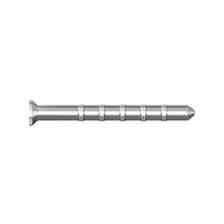
MAGNEZIX® Pin 1.5
+The MAGNEZIX® Pin 1.5 can be used as a bone pin when treating children, young people and adults for the adaption-stable fixation of bones, bone fragments or osteochondral fragments in areas exposed to minor stress: intra-articular and extra-articular fractures, arthrodeses and osteotomies of small bones and joints, small bony torn ligaments and tendons, Osteochondrosis dessicans.
Diameter
1.5 mm
Head diameter
2.5 mm
Lengths
08 mm | 10 mm | 12 mm |
14 mm | 16 mm | 18 mm |
20 mm | 22 mm | 24 mm |
26 mm | 28 mm | 30 mm
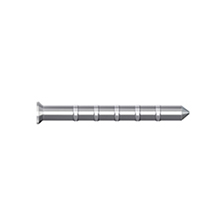
MAGNEZIX® Pin 2.0
+The MAGNEZIX® Pin 2.0 is a bioabsorbable bone pin and thus suitable for re-establishing bone continuity of slightly stressed, form-stable fragments after fractures, treatment of bony tears, re-fixation of bone fragments and osteochondral fragments. Thanks to its dimensions, it is particularly suitable for: carpals, metacarpals, tarsals and metatarsals Processus styloideus radii and ulnae, Capitulum humeri and Caput radii.
Diameter
2.0 mm
Head diameter
3.0 mm
Lengths
08 mm | 10 mm | 12 mm |
14 mm | 16 mm | 18 mm |
20 mm | 22 mm | 24 mm |
26 mm | 28 mm | 30 mm |
32 mm | 34 mm | 36 mm |
38 mm | 40 mm
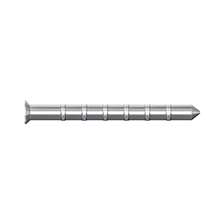
MAGNEZIX® Pin 2.7
+The indications for MAGNEZIX® pins are reconstructive methods after fractures and malpositions of the human skeleton. The objective is anatomical retention via operative splinting of rejoined bone sections after previous repositioning, all the way to bony healing. The MAGNEZIX® Pin 2.7 can be used especially here for e.g. Pipkin fractures, metaphyseal radius and ulnae fractures, and Hallux valgus corrections.
Diameter
2.7 mm
Head diameter
4.0 mm
Lengths
12 mm | 14 mm | 16 mm |
18 mm | 20 mm | 22 mm |
24 mm | 26 mm | 28 mm |
30 mm | 32 mm | 34 mm |
36 mm | 38 mm | 40 mm |
42 mm | 44 mm | 46 mm |
48 mm | 50 mm
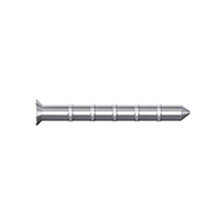
MAGNEZIX® Pin 3.2
+The indications for MAGNEZIX® Pins are reconstructive methods after fractures and malpositions of the human skeleton. The objective is anatomical retention via operative splinting of rejoined bone sections after previous repositioning, all the way to bony healing. The MAGNEZIX® Pin 3.2 can be used especially here for e.g. Pipkin fractures, metaphyseal radius and ulnae fractures, and Hallux valgus corrections.
Diameter
3.2 mm
Head diameter
5.0 mm
Lengths
12 mm | 14 mm | 16 mm |
18 mm | 20 mm | 22 mm |
24 mm | 26 mm | 28 mm |
30 mm | 32 mm | 34 mm |
36 mm | 38 mm | 40 mm |
42 mm | 44 mm | 46 mm |
48 mm | 50 mm
MAGNEZIX® CBS
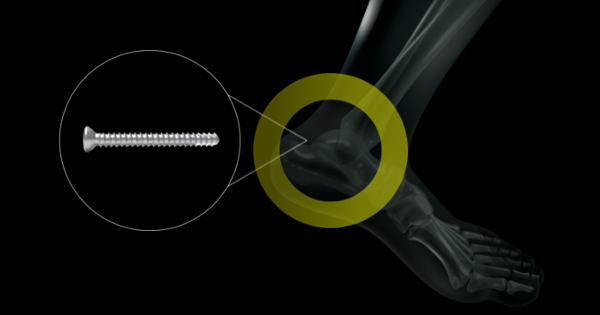
MAGNEZIX® CBS implants are metallically stable, and similar to systems made of steel or titanium, they are remarkably stronger than conventional polymer implants. However, unlike other metal screws, they do not need to be removed - because they are transformed, promote healing, and are completely replaced by the body's own tissue. These properties bring very clear advantages for doctors and patients.

Unique, transformable magnesium alloy
The use of MAGNEZIX® implants makes any subsequent implant removal unnecessary, and moreover, it supports the osseous healing process. MAGNEZIX® is bioabsorbable and biocompatible.
Head design
The head of the MAGNEZIX® CBS, with a typical cortical screw design, allows for stable repositioning of the bone fragment, with exquisite compression characteristics.
Patented safety drive design
The special design of the TORX-based drive protects the implant in the shaft and head area from failure. If the torsional load is too high during the insertion process, a targeted deformation of the screw head drive takes place. As a result, subsequent steps can be continued using a hexagonal screwdriver blade.
Thread design
The thread design, which is typical for cortical screws, produces a strong fixation in cortical bone. A dimension-dependent thread pitch supports the controlled compression of bone fragments.
Screw tip
The additionally existing chip flutes improve the thread quality and ease the screwing-in. However, a precutting of the thread in cortical bone is required.
Various sizes
These implants are available in many different combinations of different diameters and different lengths.
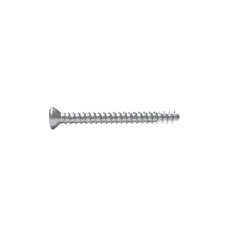
MAGNEZIX® CBS 2.0
+The MAGNEZIX® CBS 2.0 can be used as a bone screw (lag screw, position screw) for the fixation of small bones and bone fragments thanks to its small dimensions, for instance, for intra-articular and extra-articular fractures, arthrodeses, osteotomies, and pseudoarthroses, as well as for bony torn ligaments and tendons, and osteochondral fractures and dissecates.
Diameter
2.0 mm
Head diameter
4.0 mm
Lenghts
06 mm | 08 mm | 10 mm |
12 mm | 14 mm | 16 mm |
18 mm | 20 mm
![[Translate to EN:] MAGNEZIX® CBS 2.7 [] Bild MAGNEZIX® CBS 2.7](/fileadmin/images/03Produkte/Produktuebersicht/CBS/produkt_CBS27_233x233.jpg)
MAGNEZIX® CBS 2.7
+The indications for the versatile MAGNEZIX® CBS 2.7 are reconstructive procedures on children, young people and adults after fractures and/or malpositions of the human skeleton: fixation of small bone fractures (intra- and extra-articular), correcting malpositions, correcting faulty joint development, or joint stiffening, as well as treatment of osteochondral fractures and dissecates.
Diameter
2.7 mm
Head diameter
5.0 mm
Lenghts
06 mm | 08 mm | 10 mm |
12 mm | 14 mm | 16 mm |
18 mm | 20 mm | 22 mm |
24 mm | 26 mm | 28 mm |
30 mm
![[Translate to EN:] MAGNEZIX® CBS 3.5 [] Bild MAGNEZIX® CBS 3.5](/fileadmin/images/03Produkte/Produktuebersicht/CBS/produkt_CBS35_233x233.jpg)
MAGNEZIX® CBS 3.5
+The MAGNEZIX® CBS with 3.5 mm diameter can be used in children, young people and adults as a temporary load-bearing device for bone fixation. Areas of application are: fractures (intra-articular and extra-articular), arthrodeses, osteotomies and pseudoarthroses, bony torn ligaments and tendons - especially carpal, metacarpal, tarsal and metatarsal bones, epicondylus humeri, metaphyseal fractures of small and medium-sized bones and bone fragments.
Diameter
3.5 mm
Head diameter
6.0 mm
Lenghts
08 mm | 10 mm | 12 mm |
14 mm | 16 mm | 18 mm |
20 mm | 22 mm | 24 mm |
26 mm | 28 mm | 30 mm |
32 mm | 34 mm | 36 mm |
38 mm | 40 mm
MAGNEZIX® StarFuse®
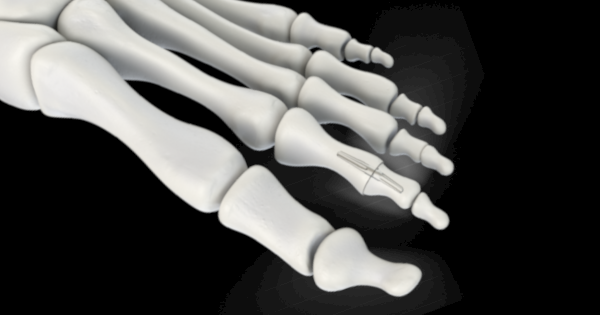
MAGNEZIX® StarFuse® are the first special implants for a strictly defined range of applications made from MAGNEZIX®. They are intended for the fusion of the toe joints (PIP arthrodeses) for surgical correction of so-called hammer or claw toes, which frequently occur in connection with a hallux valgus (bunion), affecting more than 10 million people in Germany.
The implant is metallic, but is degraded and transformed into bone tissue by the body; in addition, it has mechanical properties very similar to those of bone, such as high stability and elasticity. On top, magnesium osteoconductively stimulates bone growth, has an anti-infection effect and is particularly well tolerated.

Unique, transformable magnesium alloy
MAGNEZIX® does not leave any foreign material behind in the body, and moreover it supports the osseous healing process. MAGNEZIX® is biocompatible and bioabsorbable.
Patented wing design
Two small-sized wings act as a mechanical stop during insertion and following reduction of the more distal phalanx. This innovative design feature ensures stable axial implant positioning.
Star-shaped profile
Deep cutting longitudinal flutes guarantee proper rotational stability for optimal fixation.
Blunt ends
The blunt end design ensures secure implant position via reducing the risk of axial implant displacement.
Conical design
The conical shape of the proximal and distal end allows fast and easy insertion. This design aspect further achieves proper intra-medullar press-fit anchoring.
Various sizes
These implants are available in two angles, 0° and 10°, each with three different distal lengths.
MAGNEZIX® StarFuse® 0°
+
The MAGNEZIX® StarFuse® is a bioabsorbable intramedullary arthrodesis implant that is intended for adaptation-capable or exercise-capable fixation of small bone reconstruction limited to interphalangeal fusion of the lesser toes.
With 0° angulation for straight-angled fusion.
Proximal length
12.0 mm
Distal length
6.0 mm (Small)
7.0 mm (Medium)
8.0 mm (Large)
MAGNEZIX® StarFuse® 10°
+
The MAGNEZIX® StarFuse® is a bioabsorbable intramedullary arthrodesis implant that is intended for adaptation-capable or exercise-capable fixation of small bone reconstruction limited to interphalangeal fusion of the lesser toes.
With 10° angulation for slightly angled fusion.
Proximal length
12.0 mm
Distal length
6.0 mm (Small)
7.0 mm (Medium)
8.0 mm (Large)
MAGNEZIX® IFSC

The MAGNEZIX® IFSC as a bioabsorbable interference screw is used in the context of cruciate ligament reconstructions for the fixation of soft tissue or bone-tendon grafts in the press-fit technique in the tibia or femur.
A complete homogeneous conversion (transformation) of the implant to the body's own tissue (bone) takes place. This complete transformation of the implant makes subsequent metal removal unnecessary. The mechanical properties are very similar to those of human bone (high stability and elasticity) - and significantly better than those of conventional resorbable implants. In addition, magnesium stimulates bone growth osteoconductively, has an infection-inhibiting effect and is particularly well tolerated; allergies are not known.

Surface design
The surface of MAGNEZIX® IFSC implants is converted to a dense, porous as well as firmly adhering magnesium-based oxide layer. The refined marginal zone acts as a passivating protective layer and is completely bioabsorbable. The resulting significant delay of the degradation process ensures the required integrity of the implant even over an extended period of time.
Increased stability
Optimal mechanical properties reduce the risk of screw fracture during implantation. The strength of the MAGNEZIX® material enables the interference screws to be screwed in securely without the need to perform a thread cut.
Safe insertion
The hexagonal design ensures optimum torque transmission. An implemented self-holding mechanism facilitates safe and stable insertion of the interference screws.
Universal head geometry
The optimised screw head design makes the interference screws suitable for both tibial and femoral fixation of grafts.
Optimised thread design
The rounded thread geometry ensures that the graft is not damaged when the screw is inserted. The implants are suitable for the fixation of soft tissue as well as bone-tendon grafts.
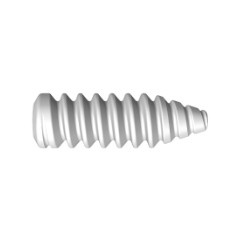
MAGNEZIX® IFSC 7 mm
+
The MAGNEZIX® IFSC as a bioabsorbable interference screw is used in the context of cruciate ligament reconstructions for the fixation of soft tissue or bone-tendon grafts in press-fit technique.
Diameter
7.0 mm
Lengths
20 mm | 25 mm | 30 mm
Hex drive
3.0 mm

MAGNEZIX® IFSC 8 mm
+
The MAGNEZIX® IFSC as a bioabsorbable interference screw is used in the context of cruciate ligament reconstructions for the fixation of soft tissue or bone-tendon grafts in press-fit technique.
Diameter
8.0 mm
Lengths
20 mm | 25 mm | 30 mm
Hex drive
3.5 mm
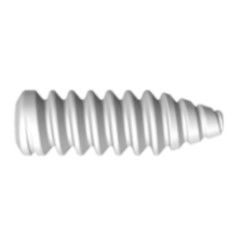
MAGNEZIX® IFSC 9 mm
+
The MAGNEZIX® IFSC as a bioabsorbable interference screw is used in the context of cruciate ligament reconstructions for the fixation of soft tissue or bone-tendon grafts in press-fit technique.
Diameter
9.0 mm
Lengths
25 mm | 30 mm
Hex drive
3.5 mm
